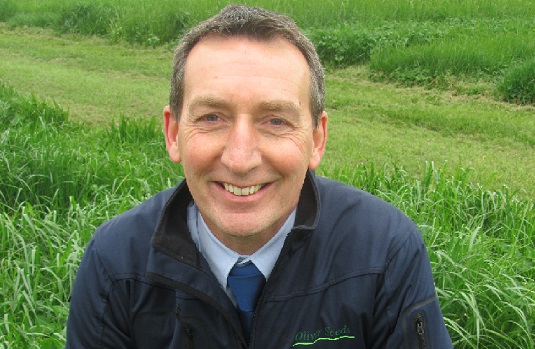
Livestock farmers desperate to re-fill empty silage stores, should not be tempted to lower the mower when taking first cut, warns Oliver Seeds general manager Rod Bonshor. In his experience, it would be better to accept a slightly lower yield now, and do everything to encourage a decent second cut.
“Leaving a slightly longer stubble – 10cm (4 inches) will allow a faster recovery and not overly pressurise the grass plants, particularly if adverse weather kicks in over the next few weeks,” says Mr Bonshor.
“Applying fertiliser – as slurry or a compound product within a week of cutting will also encourage a good yield response. Nitrogen rates for second cut should normally be around 90-100kg N/ha, including any available N in any slurry applied.”
New leys romped away
Yields from new silage leys sown last autumn have not been as badly affected by the late, cold spring as more established swards. They have romped away over the past two to three weeks with growers reporting better outcomes than expected.
“The vigour and performance of new seeds – even those drilled in a difficult autumn, shows how regular reseeding can pay dividends, in good years and bad,” says Mr Bonshor.
“The poor spring conditions have also highlighted the capability of traditional grass species such as Timothy, meadow fescue and cocksfoot. These not only start growing at lower temperatures than ryegrass, but are also more tolerant of cold damp weather. Their presence have been very obvious over the past year, but not always appreciated.
“New festuloliums, crosses of fescues and ryegrasses such as Lofa, have also shown how adaptable they are, producing very strong spring growth in our seed mixtures trials in Gloucestershire.”
Good time to check swards
Productive leys should have a minimum of 70% sown grass and clover species in them. Swards containing 50% or more of weed grasses will yield less, respond to nitrogen fertiliser poorly and have low feed value. It is easier to identify different grasses in the fields now as they progress towards heading.
“Examine each ley now – for what appears to be an acceptable green sward may actually be dominated by species like rough-stalked meadow grasses,” says Mr Bonshor.
“This species prefers heavy, wet, compacted soils so there is a lot of it around this spring. Sadly it is not good for feeding animals!”
